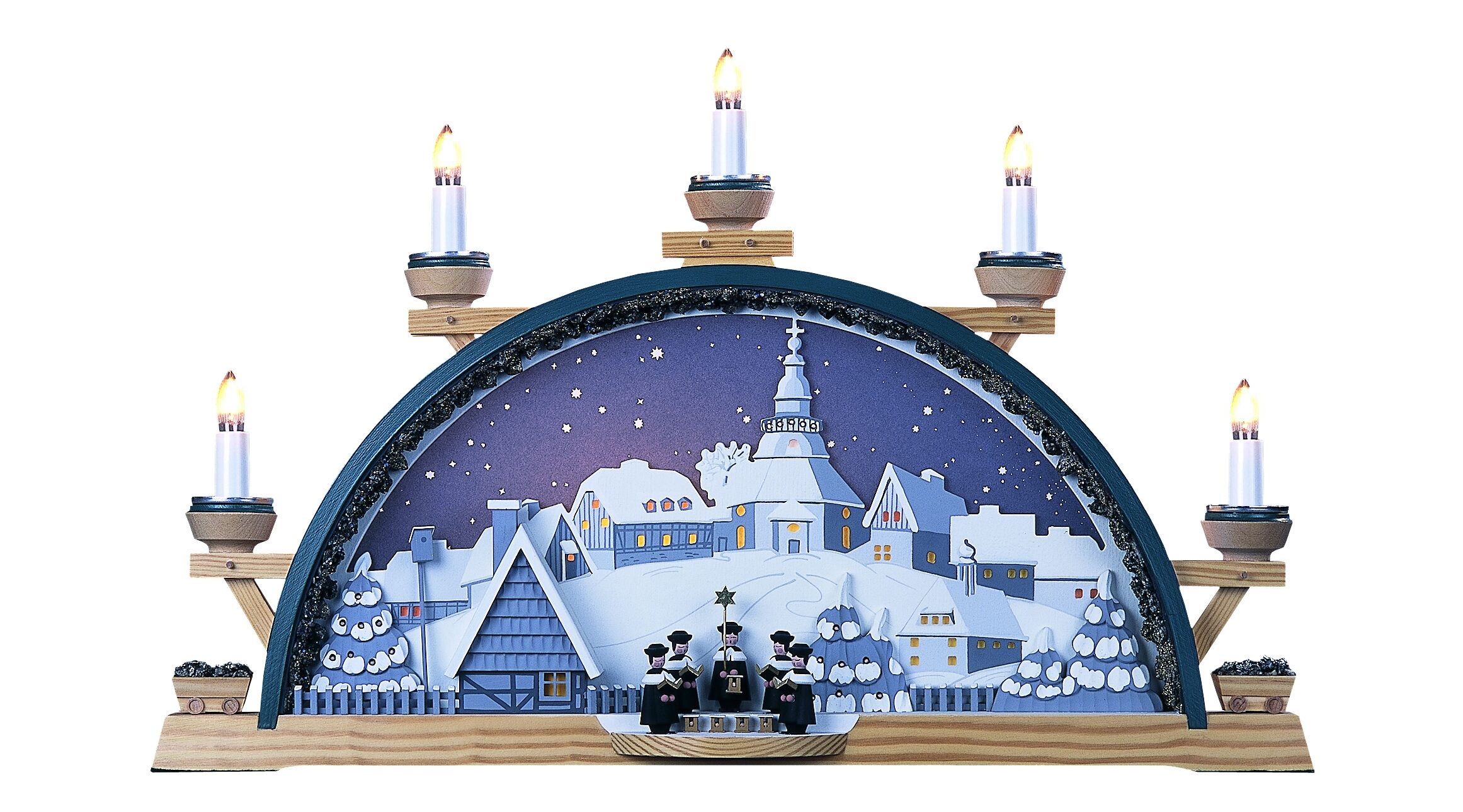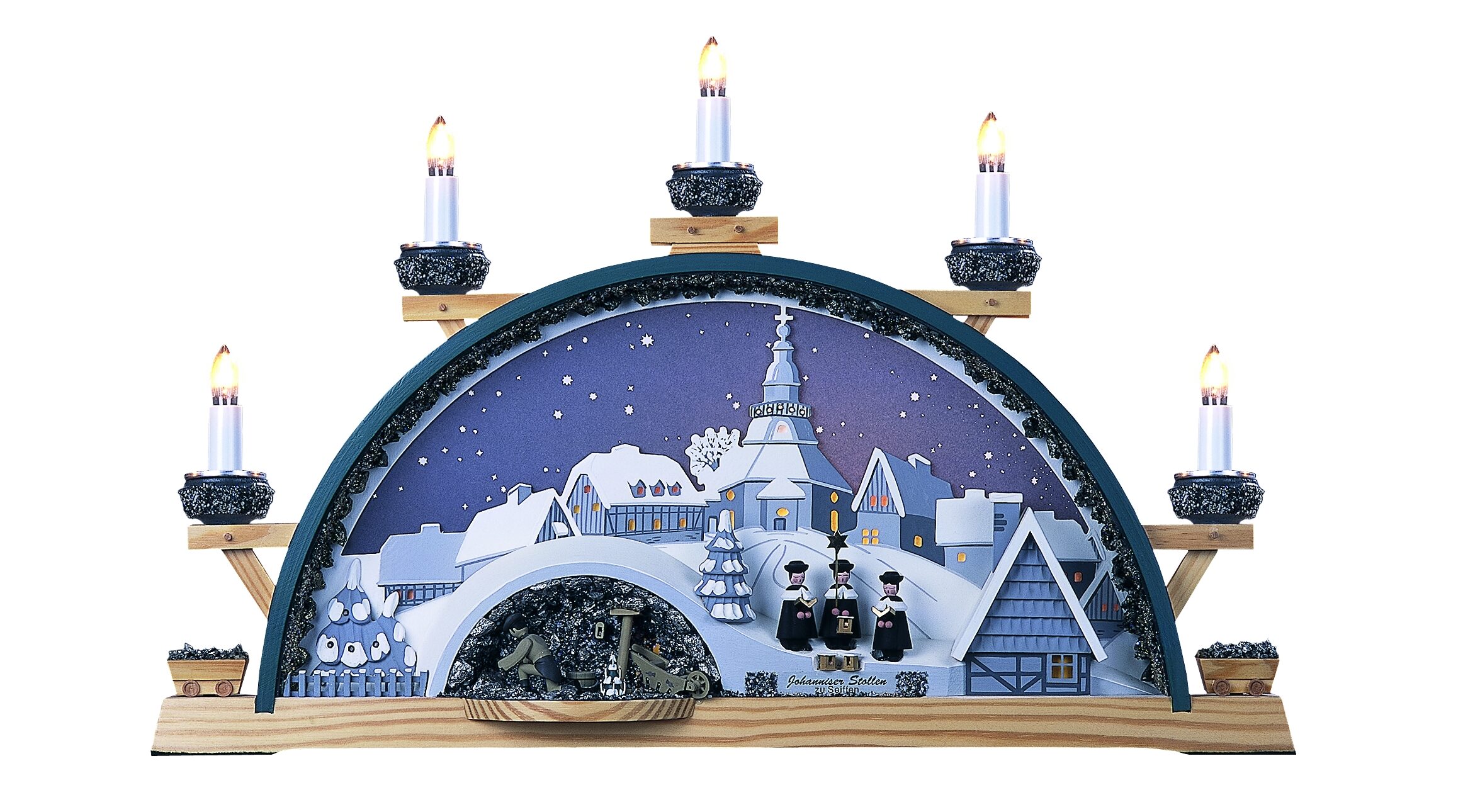
(Size 53cm x 34cm)
with 5 electric candles and electric background lighting

(Size 53cm x 34cm)
with 5 electric candles and electric background lighting

(Size 53cm x 34cm)
with 5 electric candles and electric background lighting
In mining, a tunnel is a passage that leads horizontally from the earth’s surface into the interior of the mountain to extract ore. The tunnel entrance, which is usually made in an arched shape, is known in miners’ language as a tunnel mouth hole. For the miner, this “gateway into the mountain” was of enormous importance; for him, it was also the entrance from the light of day into the darkness of the earth.
The tunnel mouth hole is also often associated with the creation of the candle arch, because its abundance of light largely reflected the great appreciation of light by the miner working in the darkness of the earth. This was particularly evident when the miners gathered in the hut house on “Mine Christmas Eve” for their midnight mass.
It was customary for them to hang their burning miner’s lamps on the arched tunnel mouth hole or, indicating the tunnel mouth hole, in a semicircle on a wall of the hut house. It is not clear whether this custom is the actual starting point for the Erzgebirge candle arch or whether its creation has other origins. Nevertheless, we have included the mouth of the tunnel entrance, which is so important for the miner, and the changing room as typical miner’s attributes in the design of our candle arches. Against the backdrop of the toy village of Seiffen, various scenes of the miner’s hard work underground in a tunnel are depicted. The arch marked “Johannisstollen zu Seiffen” with the article number 202/56/4 refers in particular to the former Seiffen tin mine.

Manufaktur Klaus Kolbe GmbH
Steinhübel 31
09548 Kurort Seiffen
© Copyright 2025 Manufaktur Klaus Kolbe | All Rights Reserved. | realisiert mit d3sign.me
To provide you with the best possible experience, we use technologies such as cookies to store and/or access device information. If you consent to these technologies, we may process data such as browsing behavior or unique IDs on this website. If you do not give or withdraw your consent, certain features and functionality may be affected.